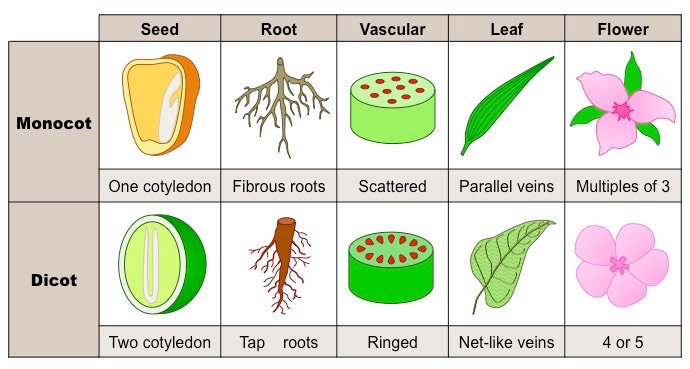Flowering plants are the most diverse group of land plants and belong within a phyla called angiospermophyta
- Historically, angiosperms were subdivided into two identifiable groups – monocotyledons and dicotyledons
- However, recent molecular evidence has caused the dicotyledons to be reclassified as a paraphyletic group
- Due to the ease of identification, many scientists still prefer to categorise angiosperms as monocots or dicots
Monocotyledons and dicotyledons can be differentiated according to a number of features:
- Cotyledons – monocots have one cotyledon within their seed, dicots have two cotyledons
- Leaf veins – monocots show parallel venation, whereas dicots display reticulated venation
- Roots – monocots have fibrous (adventitious) roots, dicots have a main tap root with lateral branches
- Floral organs – monocots have flower parts in multiples of three, dicots in multiples of four or five
- Stem vascularisation – the vascular bundles in monocots are scattered, whereas they form a ringed structure in dicots
- Pollen – monocot pollen has a single pore (monosulcate), dicot pollen has three pores or furrows (trisulcate)
Comparison of Monocotyledons and Dicotyledons

